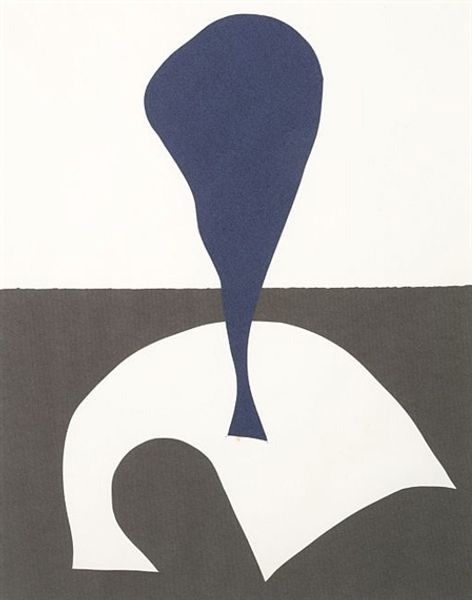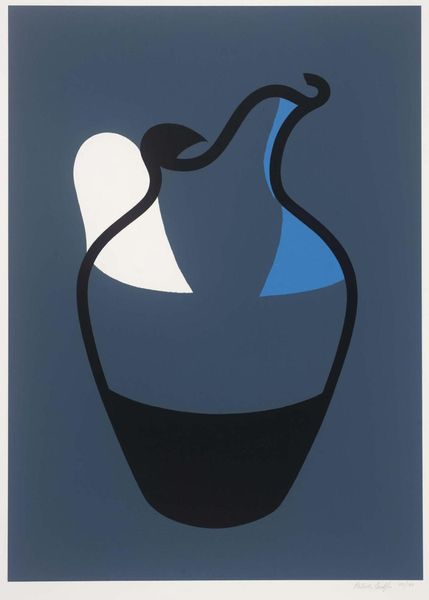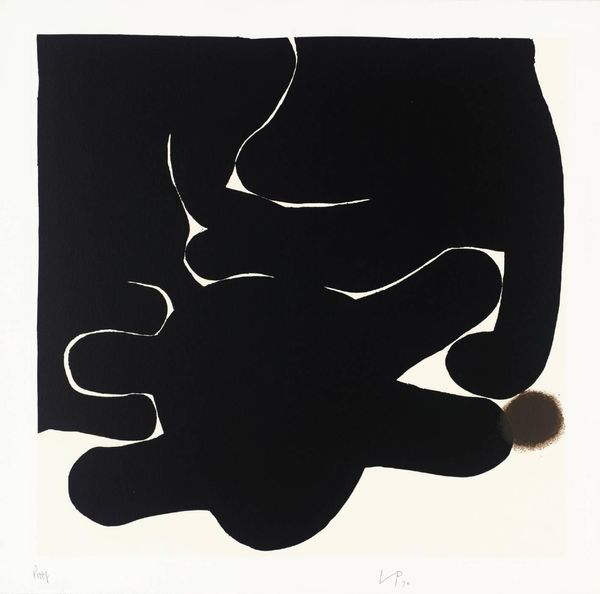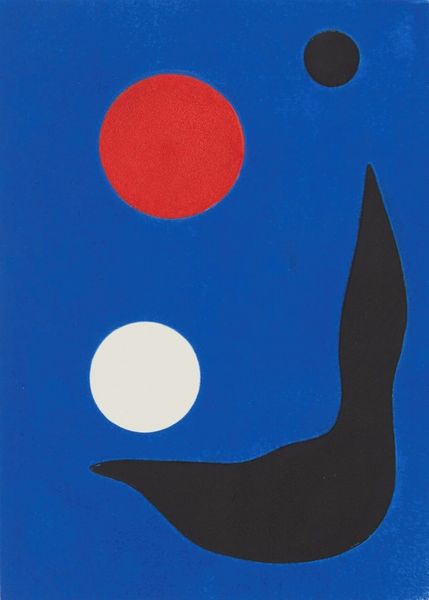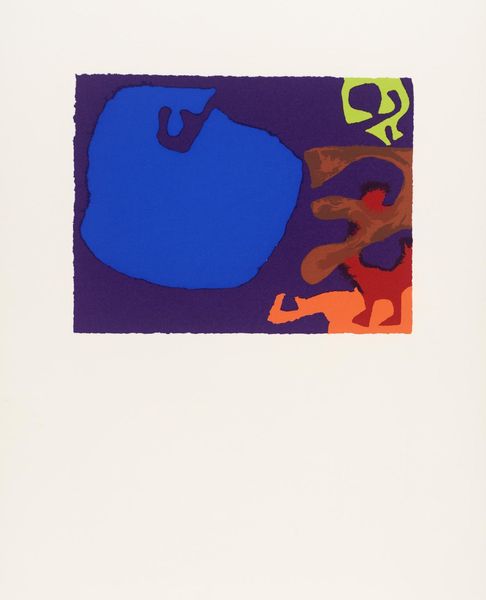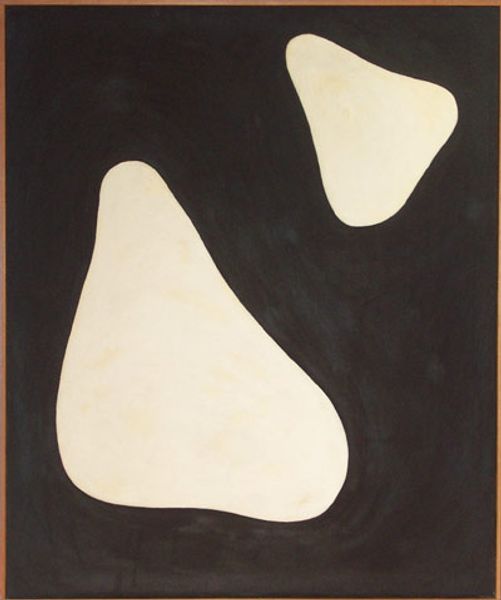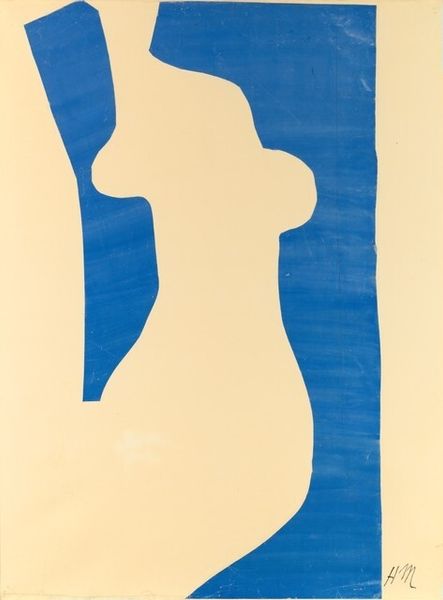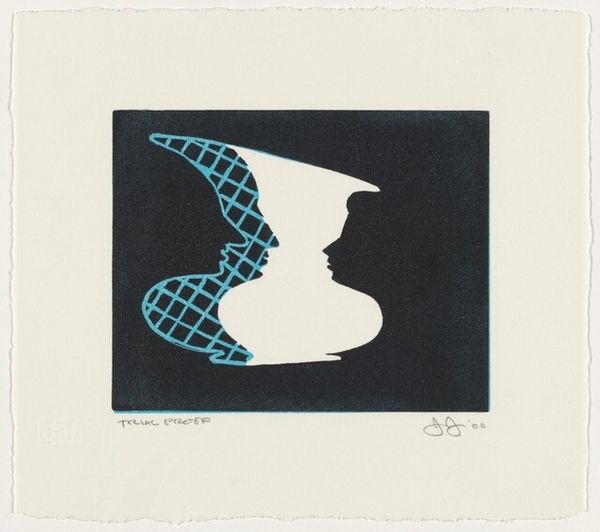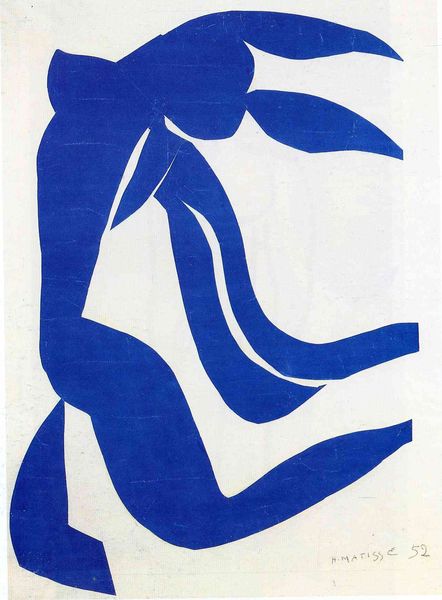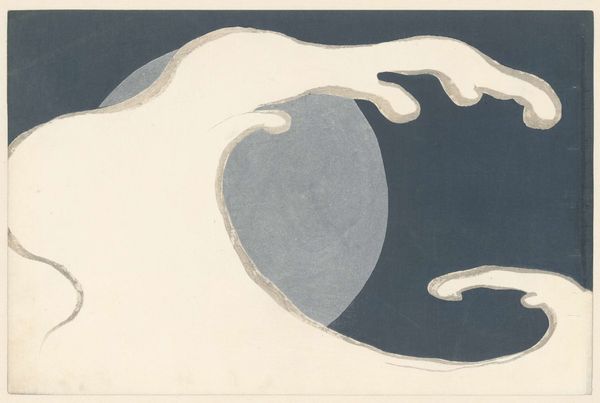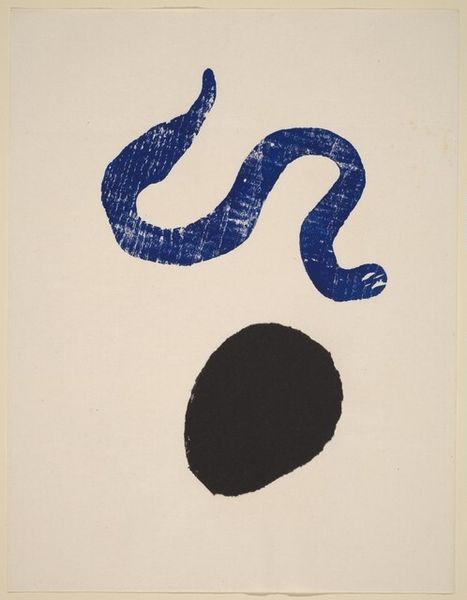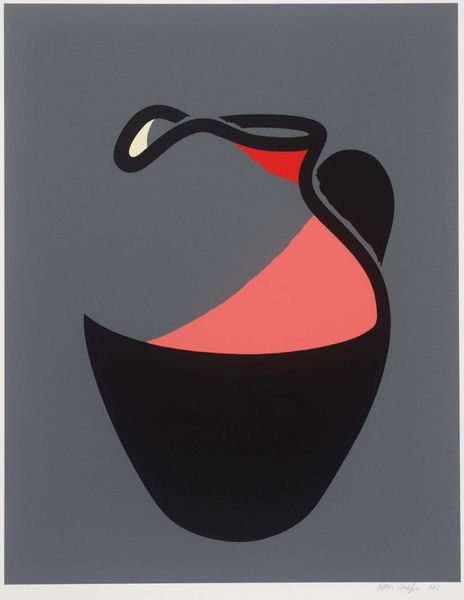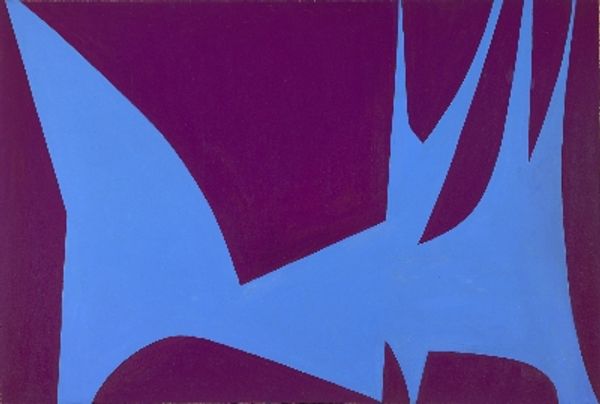
Copyright: Patrick Caulfield,Fair Use
Curator: Here we have "Vessel", a 1987 acrylic on canvas work by Patrick Caulfield. The strong contrast of color and the simplification of form are hallmarks of his practice. What's your initial response? Editor: Woah. Okay, so… bold, definitely. Graphic. It almost vibrates, doesn’t it? I feel like I could lift it right off the wall. It's so simplified it's verging on becoming pure sign, shedding all association with an actual, functional object. Curator: Caulfield’s work, particularly pieces like this one, are fascinating within the trajectory of British Pop Art. Consider the broader context of Thatcher's Britain and the rise of consumer culture that influenced many artists, with this almost flattened, commercial feel. Do you see those echoes here? Editor: Absolutely. It has that sleek, slightly soulless vibe you find in advertising of the era. And it’s ironic, because vessels are traditionally handmade objects. It’s like he's taken something ancient and re-packaged it for the supermarket shelf, right? Curator: Precisely. There’s a tension there. Caulfield manipulates high and low culture. This "Vessel," although pictorially flat, implies mass production. It seems to deny the history and labour involved in producing a tangible ceramic form. It almost challenges traditional notions of craft. Editor: Totally. And that striking negative space—that white shard biting into the handle. It almost renders the thing unusable, like a deconstructed vase, if there's such a thing. I'm oddly drawn to its imperfections! It almost feels deliberately disruptive, doesn't it? Curator: Caulfield constantly disrupted the boundaries between painting and printmaking. By exploring the impact of his geometric imagery, and embracing his bold palette he definitely had an influential artistic style. What does it leave you thinking? Editor: Honestly? It’s playful but with teeth. There’s something unnerving about that stark simplicity. It challenges me to look beyond the surface, to ask questions about what we value and how we represent the past, to what purpose. Thanks for sharing.
Comments
No comments
Be the first to comment and join the conversation on the ultimate creative platform.
